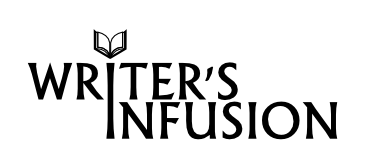By Jennifer L. Rogala
Writer's Infusion Critiquer
There was only one thing Dorothy hated more than cyclones—witches. But she loved shoes—slippers were her favorite—and little dogs, too.
Em dash, and en dash, and hyphens. Oh, my! The decision of when to use which dash is worse than deciding which direction to travel at a fork in the yellow brick road. But have courage and take heart, dear writer. I’m here to save you from racking your brain. Let’s throw a bucket of water on the wicked mystery surrounding dashes, so your confusion can melt away.
Hyphens are connectors; they hitch two words together.
Mnemonic device: Hyphen starts with H, and so does hitch.
Example of a hyphen used for a compound adjective: a well-oiled tin man.
But if the compound adjective follows the verb it is not hyphened. The tin man was well oiled.
Don’t use a hyphen to connect an adverb with another word: the sparkly ruby slippers
Hyphens are also used to remove ambiguity. The tiny lollipop guild is different than the tiny-lollipop guild. In the first example, the guild is tiny. In the second example, the lollipop is tiny.
When in doubt, check the dictionary first. The word old-fashioned is hyphened no matter how you use it. The Chicago Manual of Style—every writer should own a copy—also includes a hyphenation guide.
The en dash—longer than the hyphen—is mainly used to connect numbers like dates and times. Think of the en dash as the word through.
Mnemonic device: The word number starts with N (en).
Examples: Chapters 1–5 of The Wonderful Wizard of Oz are the most exciting.
The Wizard of Oz was performed onstage from 1902–1911.
One exception would be the dashes used in telephone numbers or social security numbers. These dashes don’t mean through, so you’d use a hyphen instead of an en dash.
There are other exceptions to the hyphen and en dash rules—this is the English language, after all—but, if we don’t keep it simple here, we’ll never get to the Emerald City of dashes—the em dash.
The em dash—longer than the en dash—can replace commas, parentheses, and colons. If you need to place a dash into a sentence, you should almost always use the em dash. Use it to add a little dramatic pause, like in the very first sentence about what Dorothy hates. I could have used a colon instead, but the em dash added a little drama. Or use it to set apart a phrase that is not necessary but adds more color to the sentence, like in the second sentence about what Dorothy loves. I could have used parentheses or commas, but the em dashes made the phrase a little more interruptive, which is the effect I wanted.
Want to show a sudden break in thought? Use the em dash. Want to show a character’s dialogue trailing off or being interrupted? Use the em dash.
What about those pesky spaces? Do you need them? It depends on which style guide you are following. The Chicago Manual of Style recommends no spaces on either side of the em dash. The Associate Press Stylebook advises having the spaces. This blog post is following the CMS guidelines.
Just like Dorothy did not find an actual wizard behind the curtain, you will not find the em dash or the en dash on your keyboard. But most word processors will automatically replace two hyphens with an em dash or en dash depending on those pesky spaces. Two hyphens with no spaces between the surrounding words will insert an em dash, while two hyphens with spaces between the surrounding words will insert an en dash. Or you can use the “Insert Symbol” option, which will display a list of symbols for you to insert into your text.
Here’s one more mnemonic device for you. To remember the length of each dash, use the word MuNcH—not munchkin—because the consonants list the dashes in descending order by length. The em dash is as long as the letter M; the en dash is as long as the letter N; and the hyphen is horizontally challenged.
I hope this helps clear the green smoke surrounding the use of dashes. And now you’re like Dorothy who,
with the help of three friends—Scarecrow, Tin Man, and Lion—found her way home.

